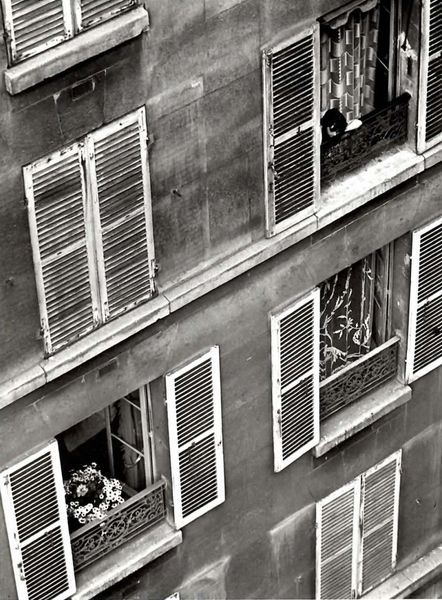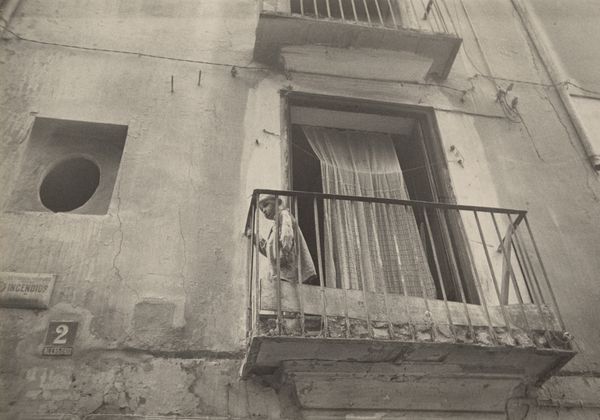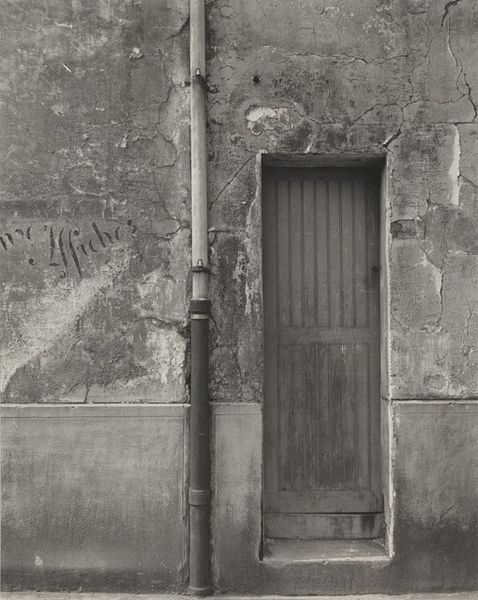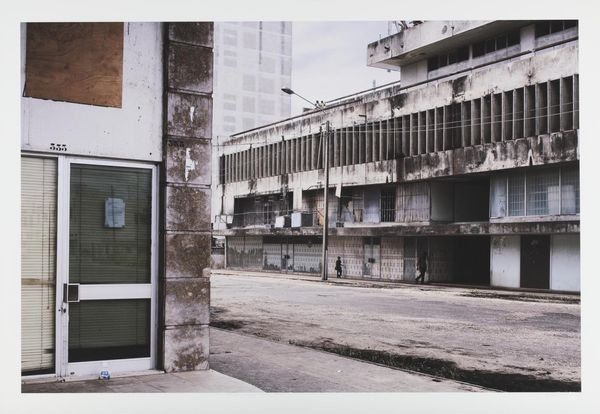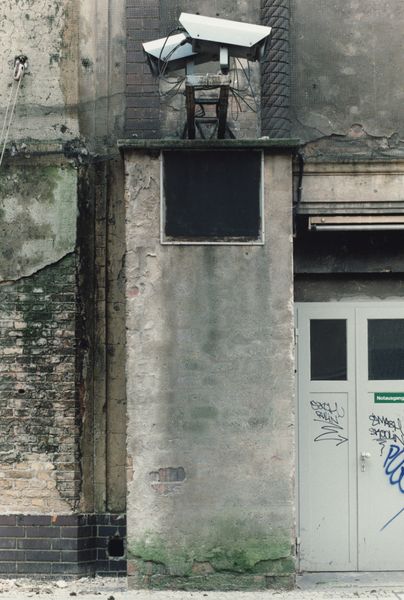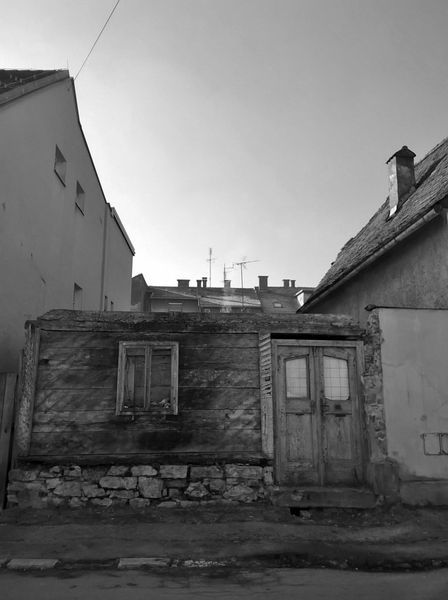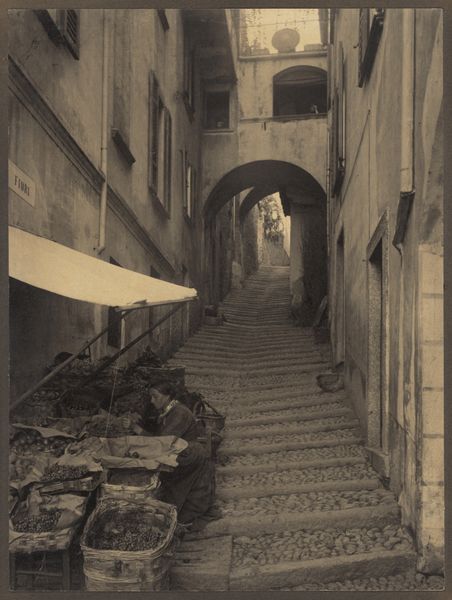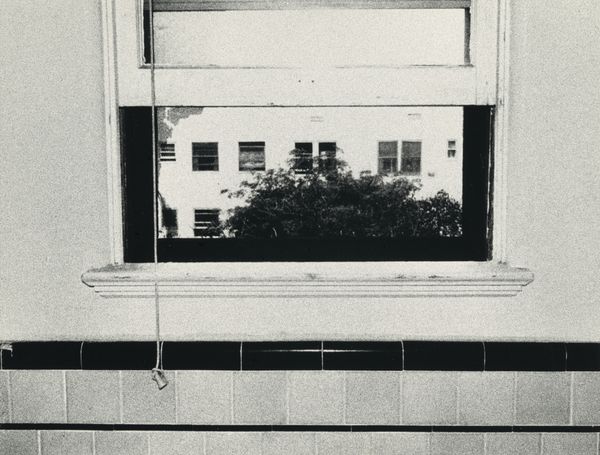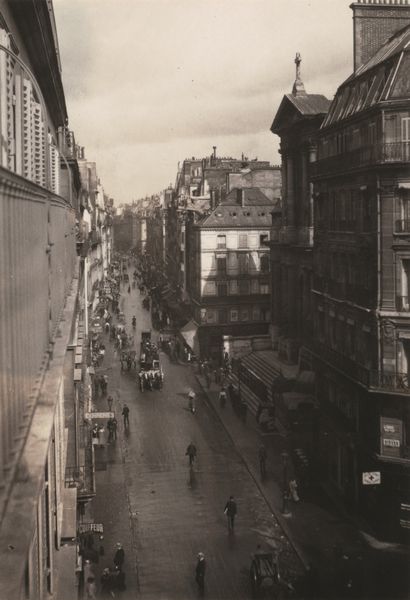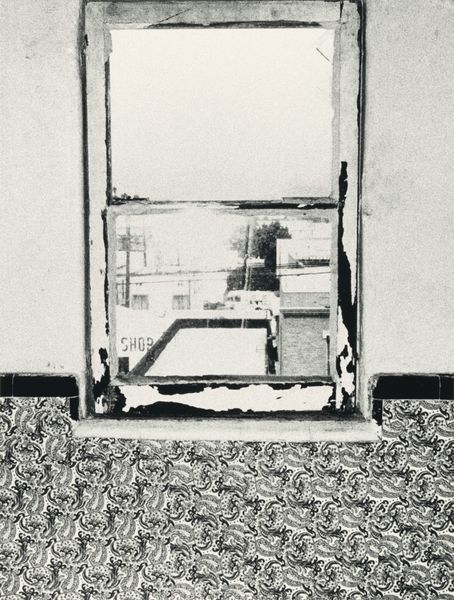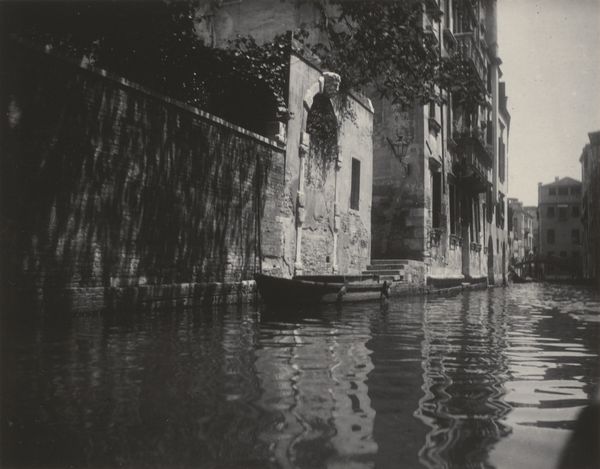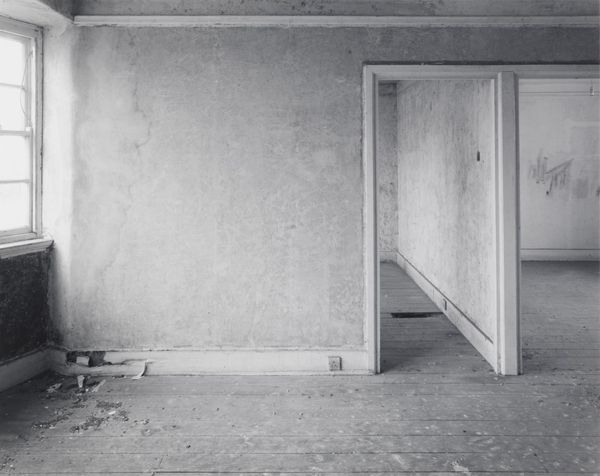
photography, architecture
#
urban landscape
#
pictorialism
#
urban cityscape
#
historic architecture
#
photography
#
urban art
#
cityscape
#
architecture
Dimensions: sheet (trimmed to image): 12.7 x 8.2 cm (5 x 3 1/4 in.) mount: 35.3 x 27.7 cm (13 7/8 x 10 7/8 in.)
Copyright: National Gallery of Art: CC0 1.0
Curator: Before us we have "European Building," a photograph, most likely taken sometime between 1894 and 1934 by Alfred Stieglitz. What are your first thoughts? Editor: Melancholy. It looks like a building exhaling the past. The composition is tight, almost claustrophobic, focusing intensely on the facade with all its closed shutters. What is so beautiful here is that one cannot even tell what building that is. Curator: Precisely! Stieglitz’s masterful arrangement of tonal gradations across the surfaces transforms a simple architectural study into a profound meditation on form and light. Notice how the contrasting textures of the aged stone, weathered wood, and delicate curtains contribute to the overall formal harmony. The contrast adds the touch needed. Editor: Right, the curtains! There's such an interesting contrast between the geometric rigidity of the shutters and the softness of those tattered curtains. And the open window – it's almost like a portal into another world, all in soft pictorial style of his photography. A great visual trick! Curator: Indeed, it invites the viewer to construct a narrative. Stieglitz’s emphasis on atmosphere over clarity aligns this work with the Pictorialist movement, which prioritized the artistic effect of a photograph. There is so much play between the form and shape, even the window shadows. Editor: I love how the monochrome palette further intensifies the emotion and makes the texture pop even more. It really shows its decay and invites contemplation. Curator: Consider too, the implied socio-economic narrative woven into this urban landscape. The image invites us to look not just at a building, but perhaps into the lives of those who occupied it. Editor: It is also, for me, more that just showing the state of urban landscape—it is more of a reminder that even the grandest structures crumble to dust, no matter what is build, what matters is feeling in between and moment capturing and its presentation for new audiences, and Alfred somehow catches that spirit in a way like no one else! Curator: Well put. This photograph truly functions as both a study of aesthetic principles and as a document of early 20th century urban life and history. Editor: Agreed! Every little piece contributes towards great timeless presentation.
Comments
No comments
Be the first to comment and join the conversation on the ultimate creative platform.
